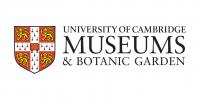Many bivalves neither burrow nor bore into the substrate but are permanently attached to it.

These animals are suspension feeders, filtering food particles out of the water around them. For those living in the intertidal zone (the area between low and high tide marks on the shore), feeding is only possible when submerged and not when exposed to the air at low tide.
Attachment can be achieved by cementation, usually involving the fixture of one valve to the substrate, as in oysters, and the Spondylus and Chama shells pictured here.

Other species attach themselves to the substrate by secreting thin fibres (byssus threads) from the foot to a solid object. The byssus threads of the noble pen shell Pinna nobilis are famous as the source of sea silk. The fabric woven from these threads is very fine yet warm. However, populations of this species of bivalve endemic to the Mediterranean are threatened with extinction, and so the sea silk industry has all but disappeared.

Marine mussels, photograph courtesy of Jamie Gundry.
Marine mussels (mytilids, pictured right) and the freshwater Zebra mussels ( Dreissena polymorpha, picutred below) both use byssus threads to attach to surfaces. Zebra mussels are not native to the UK. However, they often attach themselve to the shells of native freshwater mussels, restricting the ability of the native bivalves to filter feed. More information about zebra mussels and the research into this invasive species can be found in Bivalve Research.

Zebra mussels ( Dreissena polymorpha ) attached to a twig.





